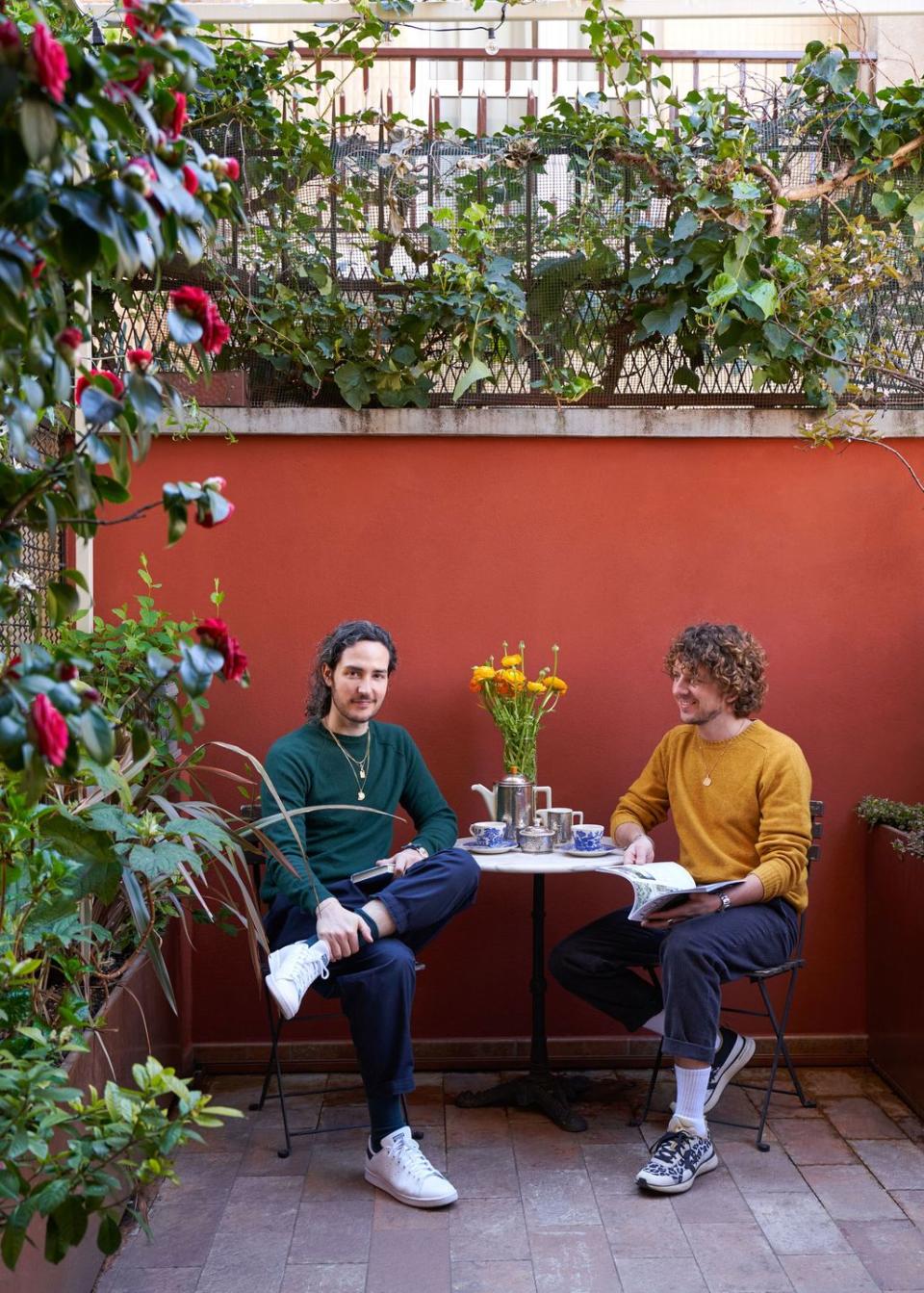The Secret to Work-Life Balance Lies Within This Eclectic Milan Apartment

Like many couples during the current pandemic, Mauro Guerini and Jürgen Hilow-Iwaszura have been playing the dual roles of romantic partner and coworker in the context of their relationship. But unlike many couples, Guerini and Hilow-Iwaszura have a decade’s worth of practice in this juggling act. Since 2010, they have been co-owners (along with a third business partner) of the Milan hair salon Sarah Hilow: Guerini handles the administrative side, while Hilow-Iwaszura focuses on the creative elements. Their success with this work-life duality is the result of considerable discipline.
“Our rule from day one has been that when we walk out the salon door, work is over,” says Hilow-Iwaszura, who, like Guerini, was born and raised in Johannesburg, where the two met and began dating 20 years ago. “Whatever needs to be said about work can wait for the morning after. And work happens in Italian. But when we come home, we switch to speaking English.”

Their Milan apartment is a testament to their ability to find balance—charmingly so—between the various facets of their life. The two-bedroom space is on the second floor of a circa-1923 building in the southeastern part of Milan, in a neighborhood full of young families and the fashionable presence of Dolce & Gabbana’s headquarters. It was a labor of love from the start.
Guerini and Hilow-Iwaszura were living less than a thousand feet away in a rental while looking for a place to buy; this apartment enchanted them with its flowing layout, generous terrace, and original stucco ceiling details. But it hadn’t been renovated since the 1970s and was badly in need of refreshing. Working with SBG Architetti, the couple redid the plumbing, heating, and electrics. They replastered and reinforced the walls. And they replicated the original parquet flooring in the dining and living rooms across the bathrooms, kitchen, and bedrooms.

Once they were finished with the six-month-long renovation, they decorated the interiors in their preferred English country-house aesthetic, incorporating many antiques from their previous apartment.
“I just can’t fathom the idea of buying something new when I can see things that are better made, more beautiful, and have a history behind them,” explains Guerini, who likes to spend the weekends antiquing with Hilow-Iwaszura in the Milan countryside.

In concert with the architects, they selected a faded blush rose color for the walls in the living and dining rooms to offset their peacock blue velvet sofa, William Morris armchairs, and 1936 wood stereo; the latter two elements came from Hilow-Iwaszura’s grandparents’ home in South Africa. The living room’s crystal chandelier, featuring 24 lights, was an antiques-market find and could be hung only after the ceiling was reinforced; the porcelain parrots are Meissen. The dining room features Victorian taxidermy, along with 18th-century Lombardian portraits, a mid-19th-century English mahogany dining table, and antique chairs that once belonged to a Bolognese family, whose members’ names are printed on the underside of each seat.

“Jürgen is much more practical—he knows where the furniture needs to go,” says Guerini of their design approach. “And I’m the one who’s like, ‘Oh, let’s stick a dead bird in that corner!’ ”
“We work well together,” adds Hilow-Iwaszura. “We find the middle way.”
The couple purchased the place only a year and a half ago, but with the lockdown in Milan last spring, they’ve had plenty of hours at home to appreciate their decorative handiwork. The terrace, for one, with its blood-orange wall—inspired by the garden walls at the Dolmabahçe Palace in Istanbul—has been a refuge for outdoor meals and fresh air. And they hardly consider their home a static entity.
“We’re always moving something,” Hilow-Iwaszura says. “This apartment is always giving us something to do, which is good.”
Says Guerini: “We never get bored.”
You Might Also Like

